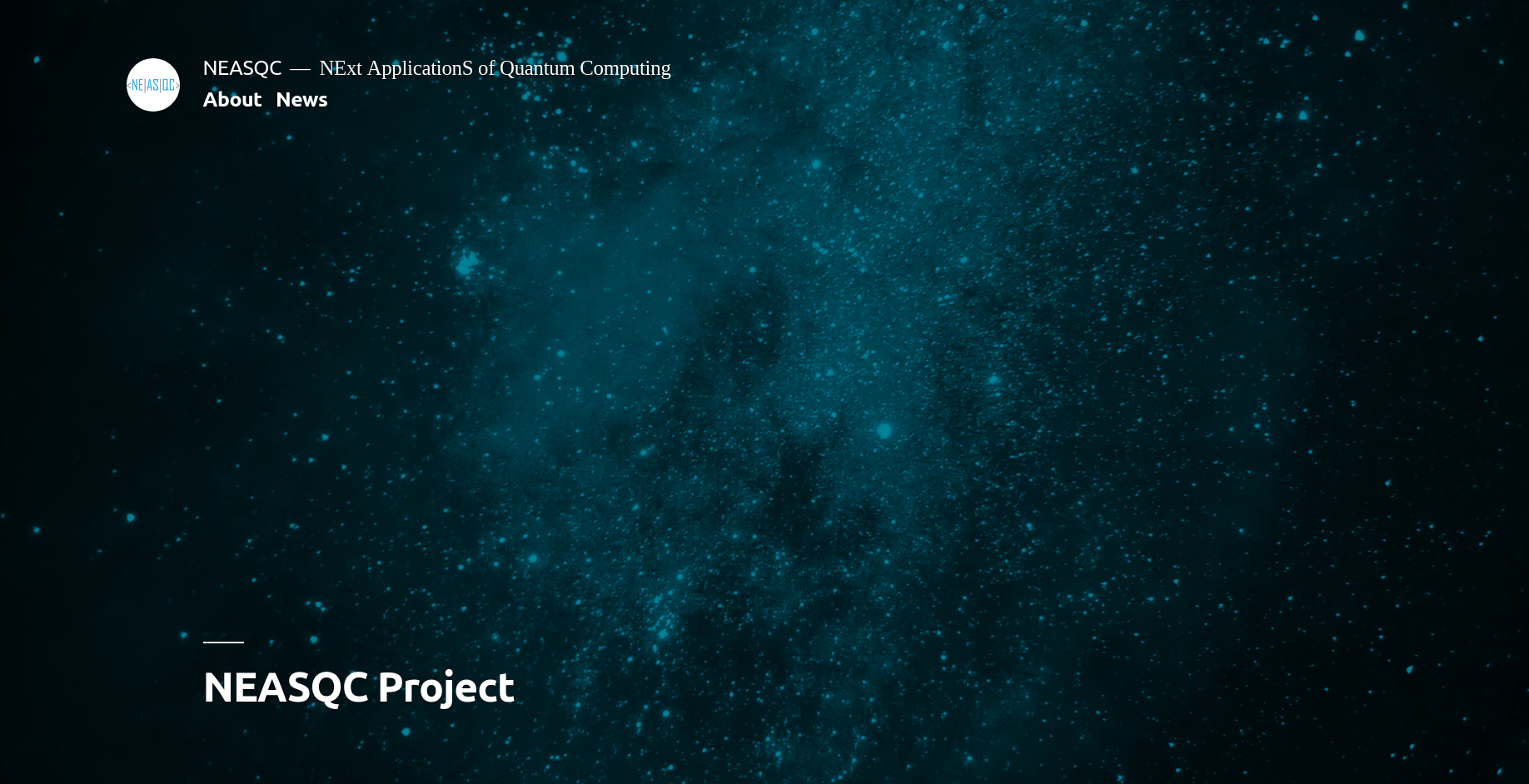The NExt ApplicationS of Quantum Computing (NEASQC) project in France will bring together a large group of experts from different industries and fields. These include experts in quantum computing, high-performance computing, AI, chemistry, and energy management. NEASQC intends to show that while completely fault-tolerant quantum computing with millions of qubits is still not available today, there remain practical uses for the NISQ (Noisy Intermediate- Scale Quantum) systems that will be available soon. NISQ computing has some advantages when running select applications, which can bring significant benefits to users such as those in industries.
The NEASQC consortium has selected nine NISQ-compatible cases in industry and finance, intending to develop new quantum software to solve these use-cases with them.
‘The ultimate ambition of NEASQC is to encourage European user communities to investigate NISQ quantum computing. For this purpose, the project consortium will define and make available a complete and common toolset that new industrial actors can use to start their own practical investigation and share their results.’
Cyril Allouche, Fellow, VP, Head of the Atos Quantum R&D Program at Atos, and coordinator of the NEASQC project.
NEASQC also intends to build bridges between quantum computing hardware activities (particularly the European Quantum Flagship’s) and the end-user community. NISQ demands that software and hardware teams work together, even more than in classical IT. The consortium believes that its work will provide information on how to further develop NISQ machines, which will greatly help the quantum hardware industry.

The NEASQC project has gathered 12 organisations from 8 European countries to work together and is coordinated by Atos. With a budget of 4.67 million Euros and lasting 4 years, it was funded by the European Commission. It is part of the Horizon 2020 programme as well. On October 5, it was launched in an online kick-off meeting that had all the consortium members meet virtually.
NEASQC objectives
- Develop 9 industrial and financial use cases with a practical quantum advantage for NISQ machines.
- Develop open source NISQ programming libraries for industrial use cases, with a view to facilitate quantum computing experimentation for new users.
- Build and share knowledge with a strong user community dedicated to industrial NISQ applications.
- Develop software stacks and benchmarks for the Quantum Technology Flagship
About the NEASQC project
This project brings together experts to help develop new quantum-enabled applications that can take advantage of what NISQ systems can bring to the table in the near future. NEASQC will address practical problems like drug discovery, CO2 capture, hydrocarbon well optimisation, and more. It intends to prime and develop an active European quantum community centred around NISQ quantum computing, doing so by providing a common toolset in the name of standardisation and unity.
The NEASQC project is run by a European consortium that includes:
- Atos, the European number one in high-performance computing and initiator of the first European quantum computing industry program (coordinator, France)
- AstraZeneca AB, the global, science-led biopharmaceutical company (Sweden)
- CESGA (Fundación Publica Gallega Centro Tecnológico de Supercomputación de Galicia), a major Spanish public HPC centre (Spain)
- Electricité de France (EDF), the world’s leading electricity company and a global leader in low-carbon energies (France)
- HQS Quantum Simulations GmbH, an SME – spinoff of the Karlsruhe Institute of Technology – that develops software for quantum mechanical material simulations (Germany)
- HSBC Bank Plc, one of the largest banking and financial services organisations in the world(United Kingdom)
- Irish Centre for High-End Computing (ICHEC), the national HPC centre in Ireland
- Leiden University, through its Leiden Institute of Advanced Computer Science that is known for its expertise in quantum computing algorithmics, quantum machine learning and high-performance computing (Netherlands)
- TILDE SIA, an SME that is a European leader in language technology (Latvia)
- TOTAL S.E., the broad energy company (France)
- Universidade da Coruña – CITIC (Centre for Information and Communications Technology Research), a research centre which advances and shows the potential in R&D&I in the use of ICTs (Spain)
- Université de Lorraine, through the LORIA lab (Lorraine Research Laboratory in Computer Science and its Applications, a research unit common to CNRS, Université de Lorraine and Inria) (France)
NEASQC is part of the second wave of Quantum Flagship projects. It will be included with the Quantum Computing Application Area due to this. Under grant agreement No. 951821, the project has been funded by the European Union’s Horizon 2020 programme.
About the Quantum Flagship
Launched in 2018, the Quantum Flagship is one of the largest and most ambitious European Union research initiatives. Lasting for 10 years and with at least €1 billion to spend on research, it brings together research institutions, enterprises, academia, industry, and policymakers to collaborate on a scale never seen before. The flagship’s main goal is to expand European scientific leadership and excellence in quantum research as well as eventually apply this research commercially. Having more than 5000 researchers all throughout its lifetime, the Quantum Flagship will strive to create the next generation of disruptive technologies that will impact all of Europe. This will potentially place Europe as a centre of quantum research and a technological leader.

